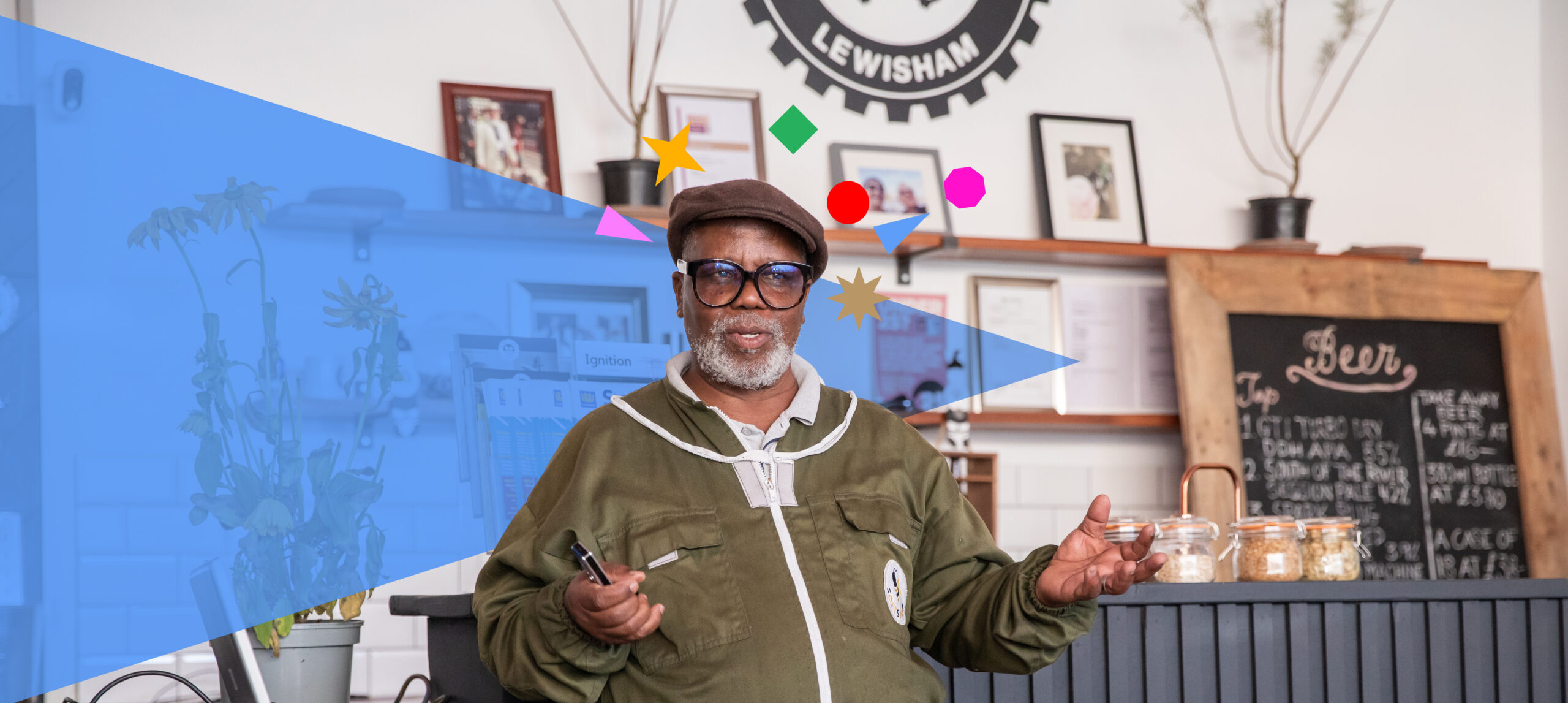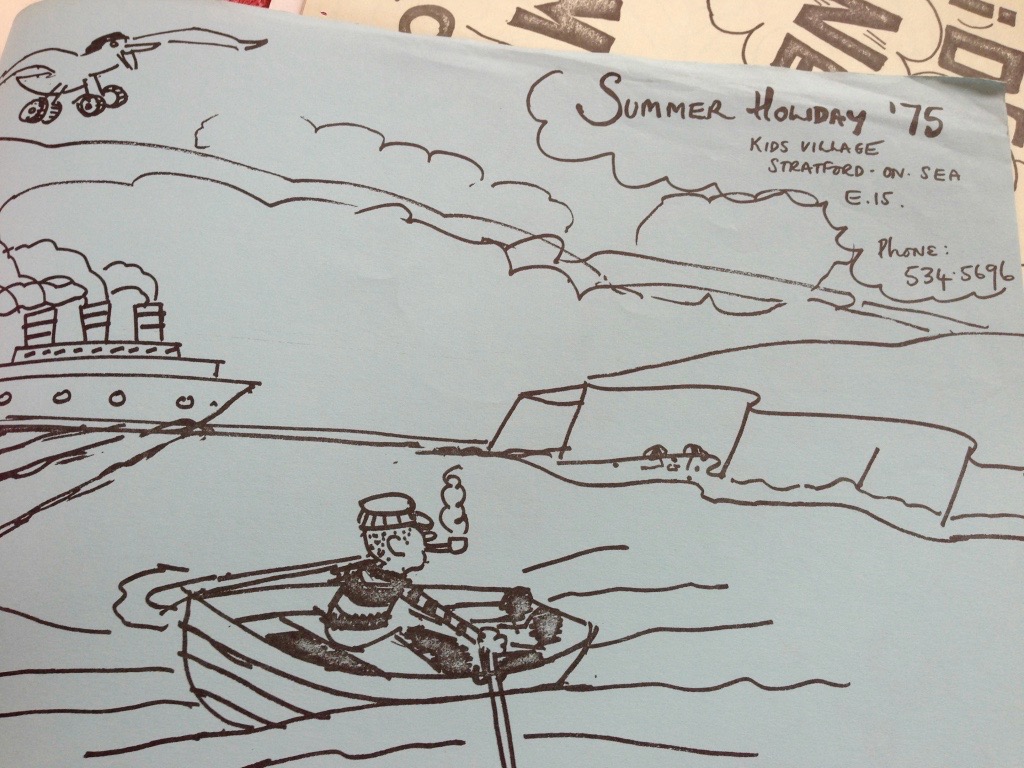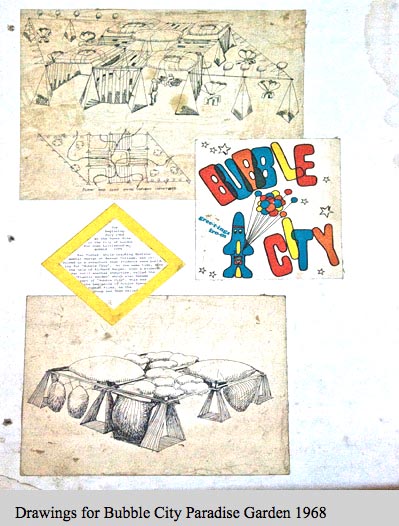
Where does the idea come from?
In 1961 Joan Littlewood and Cedric Price designed a Fun Palace building – a ‘laboratory of fun’. They imagined a building linked through technology to other spaces, accessible to those who wouldn’t normally go to arts venues or great centres of learning.
Joan said, “I do really believe in the community. I really do believe in the genius in every person. And I’ve heard that greatness come out of them, that great thing which is in people.”
The original design said:
“Choose what you want to do – or watch someone else doing it. Learn how to handle tools, paint, babies, machinery, or just listen to your favourite tune. Dance, talk or be lifted up to where you can see how other people make things work. Sit out over space with a drink and tune in to what’s happening elsewhere in the city. Try starting a riot or beginning a painting – or just lie back and stare at the sky.”
Unfortunately that ideal space was never created, although there were a few incarnations of potential Fun Palaces, Joan’s Stratford Fair in 1975 among them. In 2013 we re-imagined Fun Palaces as a space that any of us could create, wherever we live – championing more equitable uses of the under-used buildings and spaces we already have and genuinely community-led. There’s a blog about how our version started here.
This first imagining was simply as a celebration of Joan’s centenary – what we didn’t know in 2013 was how many people would be excited by this idea and how many communities would take it on and make it their own, helping us grow it into a campaign for cultural democracy and the annual Weekend of Celebration it has become – local people sharing skills, creating tiny revolutions of connection.
Stanley Mathews has a great piece about the original Fun Palace design here.
Joan Littlewood, Theatre Director (1914-2002)
Joan was born in South London on 6 October 1914, she died in 2002. At eighteen she won a scholarship to RADA and, having left drama school early, she walked from London to (almost) Manchester to get away from the constraints of 1930s London theatre. In Manchester she met Ewan MacColl. They worked with actors and writers, making dynamic and provocative work. Following political activism during the Spanish Civil War and WW2, the company reformed as Theatre Workshop. In 1946, they were invited by Ruth Pennyman to live and work from Ormesby Hall, which they did for eighteen months. The company toured and worked together, developing the Laban-based movement work and ensemble that became their hallmark. At the end of 1952 the company decided to return to a settled base. MacColl chose to stay in the north, Theatre Workshop moved to Stratford.
The Theatre Royal Stratford East was a dilapidated palace of varieties when Littlewood and her partner Gerry Raffles took it over in January 1953. The company renovated the building and Joan’s great causes – community and political theatre, improvisation, the working class language, the inclusion of children – helped change the face of British theatre.
She had numerous hits, most notably Oh! What A Lovely War, Fings Ain’t What They Used To Be and A Taste of Honey. Her production of Brendan Behan’s The Quare Fellow brought Behan international acclaim. Joan worked with many artists at the start of their careers, people who later became household names including Barbara Windsor, Harry H Corbett, Lionel Bart, Victor Spinelli and Murray Melvin.

Cedric Price, Architect (1934-2003)
Price was an influential architect and architectural writer. He believed in the idea of using architecture and education as a way to drive economic redevelopment. Among many other projects, Price worked on the design of the aviary at London Zoo and proposed the redevelopment of the Thames South Bank. His original Fun Palace design is cited by many as an inspiration for Richard Rogers and Renzo Piano’s Pompidou Centre.

Gordon Pask, Cybernetician (1928-1996)
Joan and Price invited Pask to participate in the project in around 1963, and he organised the Fun Palace Cybernetics Committee. His work in cybernetics, concerned with machine behaviour, feedback, information and learning was in tune with idea of the Fun Palace as open-ended and responsive to its audiences.
Despite a Fun Palace Trust that included such luminaries as Yehudi Menuhin and Richard Buckminster Fuller, the Fun Palace never eventuated as a venue, but there were two early versions. In 1968, Joan and colleagues created Bubble City near Paternoster Square in central London, and in 1975 they took over the derelict building site in front of the Theatre Royal Stratford East, to create the Stratford Fair.
Two early incarnations of the Fun Palace

Bubble City (1968)
A space and an event that brought audiences, families, adults, children, artists, architects and designers together for public playing and engagement. Read artist and writer Ken Turner’s account.
Stratford Fair (1975)
This was a public fair created by and for the people of Stratford East. The fair had everything from donkey rides (requested by local children) to entertainment from Victor Spinelli and Val Walsh. As part of the fundraising for the fair, Littlewood organised a “Kids’ Pilgrimage” to St Paul’s. Dozens of children walked from Stratford to St Paul’s. Few of them had ever left the borough and Littlewood arranged for the verger of St Paul’s to meet them on the steps of the cathedral – an education in itself.

Images Courtesy of Theatre Royal Stratford East Archive Collection
